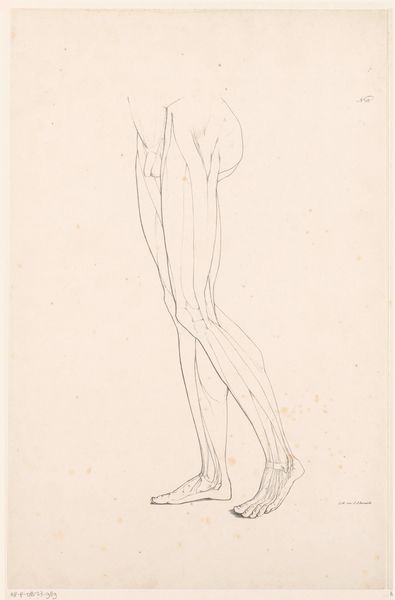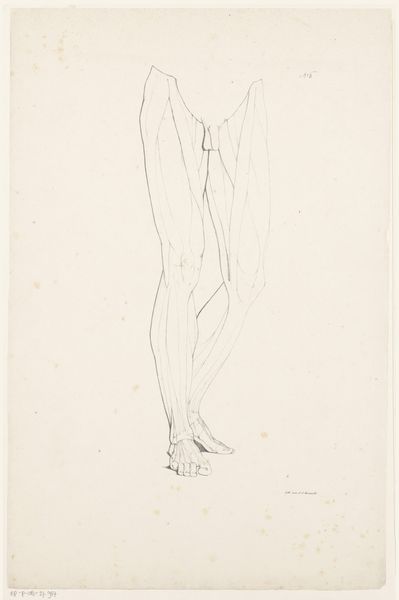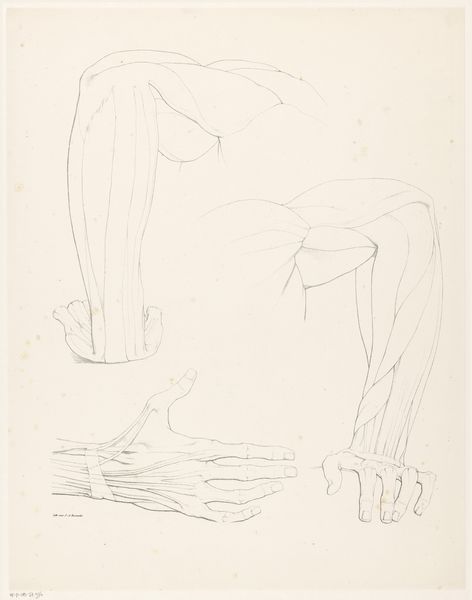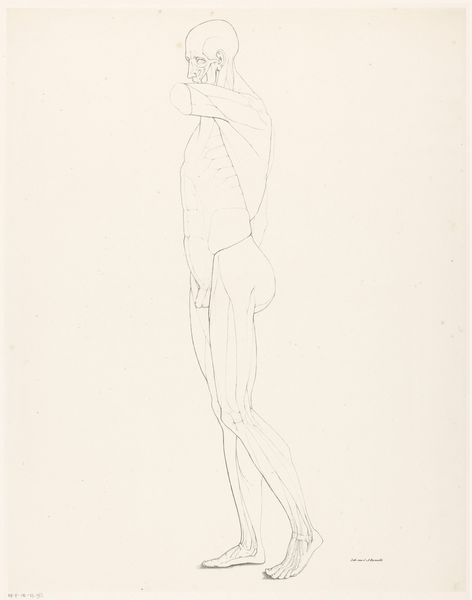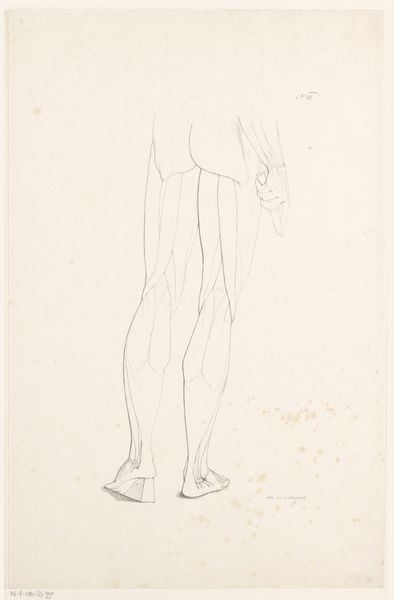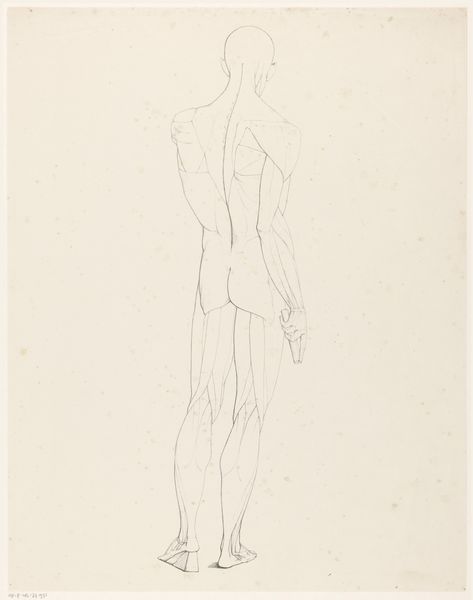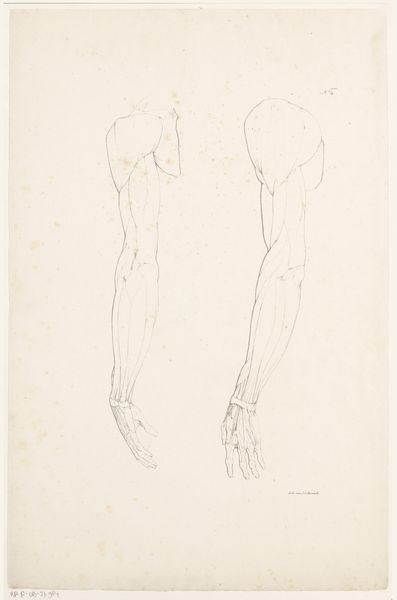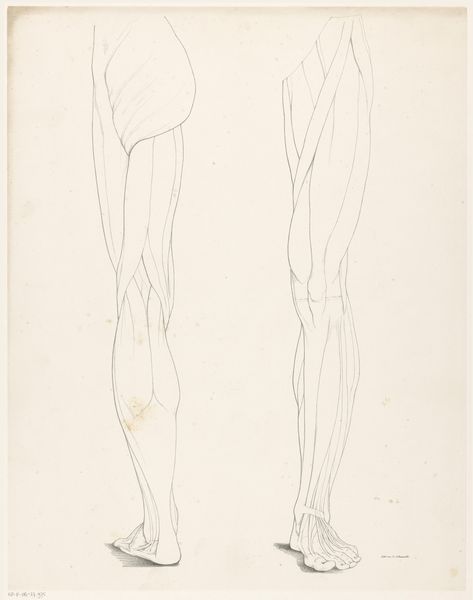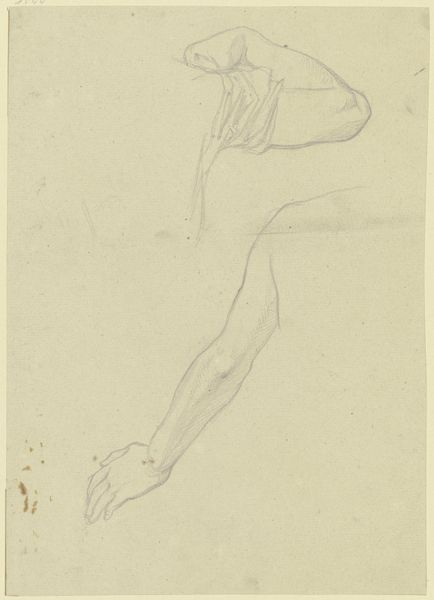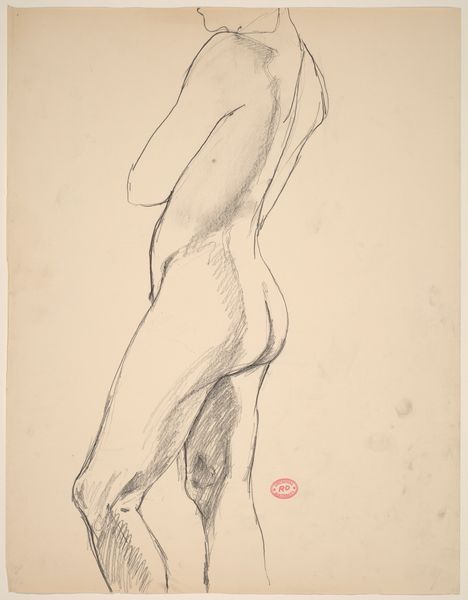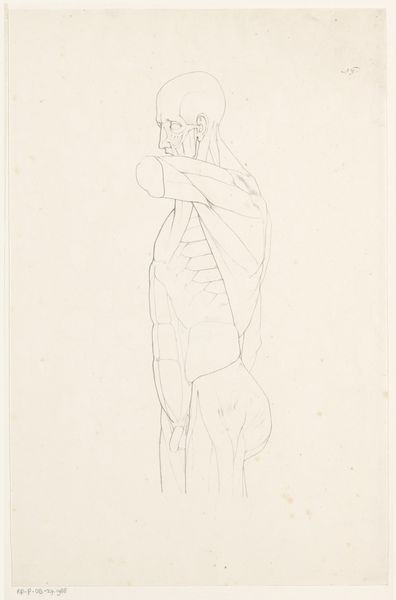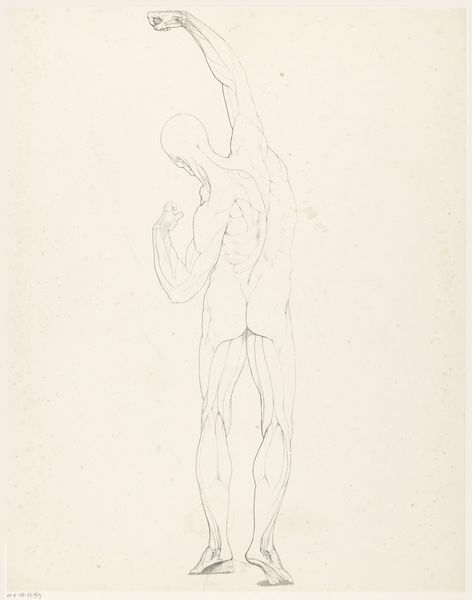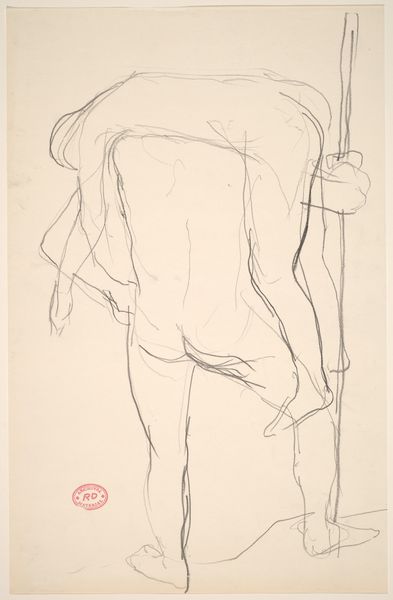
drawing, pencil
#
drawing
#
pencil sketch
#
etching
#
figuration
#
pencil
#
pencil work
#
academic-art
#
arm
Dimensions: height 425 mm, width 270 mm
Copyright: Rijks Museum: Open Domain
Curator: This drawing from sometime between 1820 and 1833 by Jean Augustin Daiwaille, titled "Twee armen met spierbundels"—or Two Arms with Muscle Bundles—shows exactly that: two studies of human arms. It’s a pencil drawing, almost like a faint memory on the paper. What are your first thoughts? Editor: Immediately, I'm struck by how clinical it feels. Almost like a medical illustration, focusing on the anatomy and less about… well, anything else. The starkness highlights the body as a site of study, almost detached from humanity. Curator: Absolutely. Anatomical studies were crucial during this period, deeply connected to academic art and the scientific gaze. Artists needed to understand musculature to depict the human form accurately in their paintings and sculptures. Editor: I see that. It reminds me of the power dynamics inherent in observation. Who gets to look, and who is subjected to being looked at and dissected, even in art? The arms, displayed so openly, raise questions about vulnerability. Curator: An interesting point. Drawings like these also speak to the educational structure of the time. Aspiring artists would copy anatomical drawings as part of their training, learning to render the body in a classical, idealized manner. The Rijksmuseum’s acquisition of this study fits into a larger narrative of skill acquisition and preservation. Editor: Still, these feel oddly disembodied. Like relics, stripped of any context beyond pure physicality. One might reflect on how such depictions might erase stories and lived experiences. What do you think about Daiwaille’s process, the choice of a seemingly simple pencil medium to accomplish such a feat? Curator: Pencil allows for a very precise, controlled line, perfect for capturing the detail needed in anatomical studies. Also, as a teaching tool, it mirrors the act of careful copying, learning through imitation and refinement of line work. Editor: That makes sense. I still circle back to that vulnerability, but now, in light of artistic development during that time, a certain strength emerges, maybe in learning how to capture form as resistance to losing bodily agency. Curator: Yes, the artist, by mastering the form, reclaims some agency, I agree. These kinds of sketches were crucial stepping stones. Thinking about the finished portraits they influenced, it's fascinating to consider their sociopolitical effects and lasting visual impacts. Editor: Well, I've gained a whole new perspective appreciating how anatomical studies like this connect the scientific with the subjective in an ongoing visual narrative. Curator: Indeed. Viewing these studies as products of both scientific inquiry and artistic endeavor broadens our appreciation for the artistic process, and Daiwaille's own dedication to both pursuits.
Comments
No comments
Be the first to comment and join the conversation on the ultimate creative platform.
